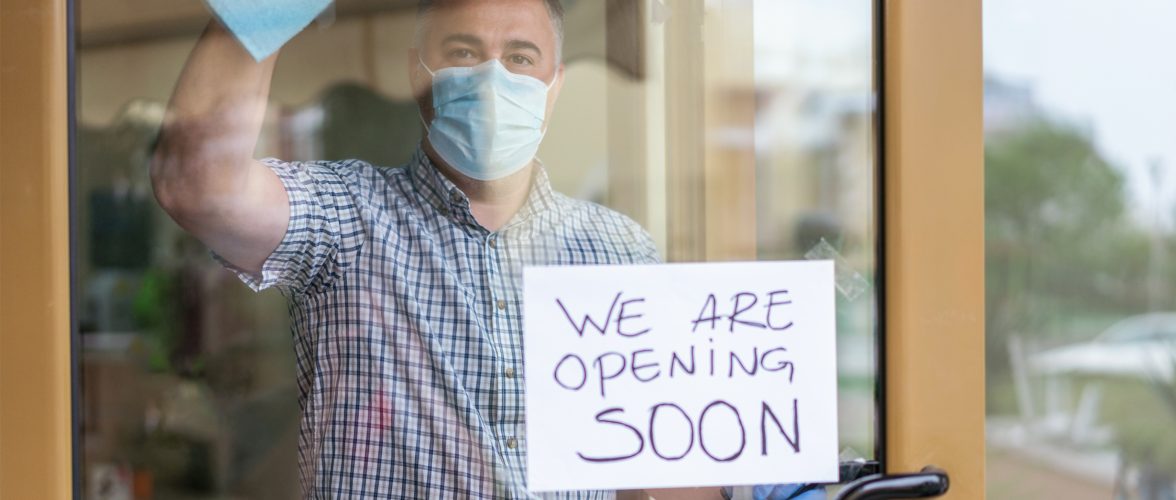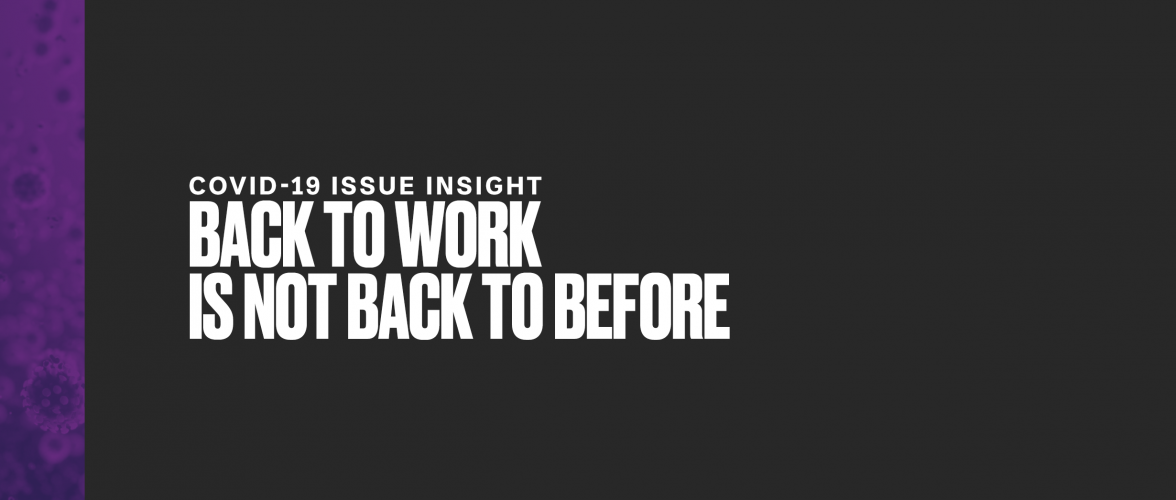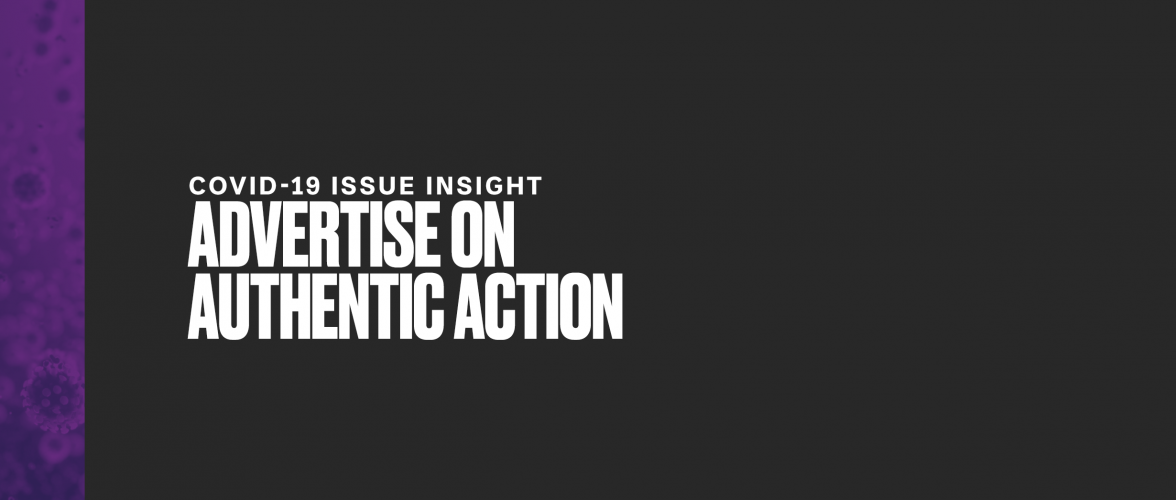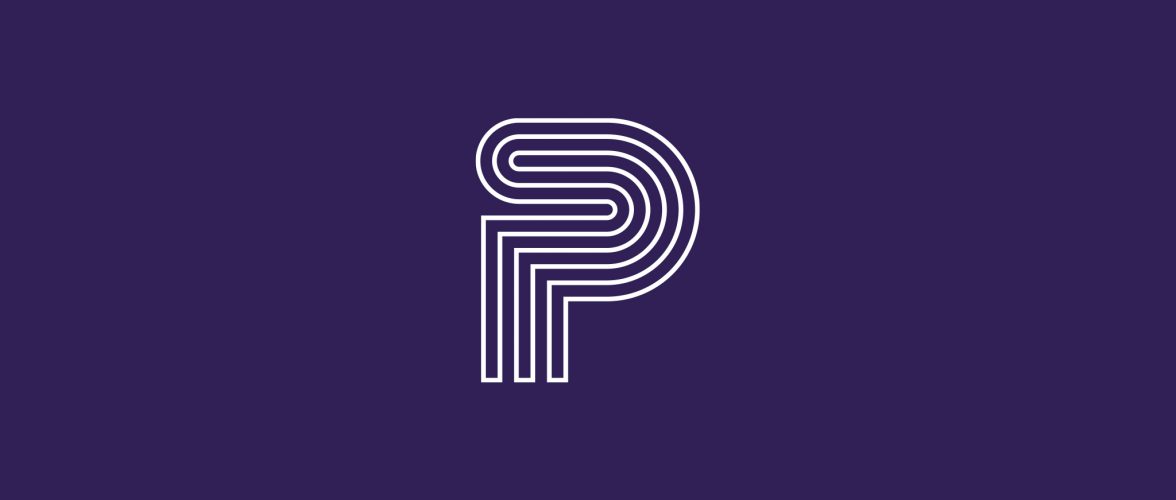Uncategorized

Posted on
July 20, 2020
3 Min. Read
Author
Nate Byer
Be Ready to Burst the NBA Bubble
If there’s one thing we do well in America, it’s argue. Especially about politics. Taxes, healthcare, the environment – on pretty much any topic, it’s a fair bet that about half of Americans will happily disagree with the other half. But sports has always been different.
Despite increasingly divergent opinions on the intersection of political activism and our national pastimes, the love of competition on the professional playing field, court, or rink has been something we come back to in times of challenge. Sports represent a fun and safe place to connect, and yes argue, with family and friends. Or at least it used to be.
As COVID-19 infections continue to surge across the country, the pandemic is creating new political and social flash points around what it means to play ball.
For the NBA, a league that has invested heavily in bringing players to Florida for the July 30 season restart, the challenge of playing indoors in the midst of the crisis is particularly pointed. In March, the NBA’s move to postpone the 2020 season after a single player tested positive was a bellwether of things to come. Their early, decisive action was brave and sent a message about the value of player and fan safety.
But now, in the midst of rising infection rates, beliefs among fans as to how the league should move forward are fractured. One in four sports fans are already against the NBA’s decision to restart the season and only 16% of fans think the league should move forward if players start to test positive inside the NBA’s “bubble.”
Half of fans say the league should cancel the final set of games if players start to test positive, full stop.

What’s underlying this concern seems to be two widely held beliefs: first, 73% of fans say that looking back, the NBA’s decision (and those of other leagues) to pause play was the right move; and second, 65% say players, despite being paid between merely huge and hugely massive sums of money, shouldn’t have to play if they have concerns about the virus. Only 29% of sports fans say players should have to lace up.
The reality is that the NBA is riding high on its positive reputation right now, despite the much maligned “bubble meals.” Fans are bullish on the league’s future (45% say its best days are still ahead!) and its reputation for deftly navigating social issues is the envy of every other league, including the NCAA. In April, The Boston Globe noted “The NBA is the only [league] trusted to do the right thing, whatever that happens to be, largely because Adam Silver is the most competent and compassionate commissioner in sports. It’s not close, really. He’ll be worthy of our trust when sports return and normalcy begins to be restored.”
And yet here we are in mid-July, staring down many of the same challenges we faced in April. The virus is surging and hospitals in some parts of the country are at a breaking point. In many ways, we’ve willed an opening that we weren’t ready for, and the NBA is doing everything it can to toe the line with its own. Every industry and business is facing this challenge of the public wanting something we might not be ready for, but probably nowhere is it more easily visible than with sports. Non-sports fans are nearly 60% more likely to think restarting the NBA right now is a mistake.

Adam Silver should tread carefully to protect his and the league’s reputation equity in the coming weeks. In March, he pulled the ripcord and quite literally saved lives while strengthening the NBA’s reputation. Being brave enough to ignore the sunk costs of the restart if players start testing positive will cement beliefs about the league’s values, deepen trust in its leaders, and accelerate the NBA’s aspirations to become the leading American sport of the future.
Purple Pulse Survey of the US Informed Public. N=800. July 1-2, 2020.
By Nate Byer | Managing Director | nate.byer@purplestrategies.com
Purple is actively partnering with companies and industries to navigate the ever-changing COVID-19 pandemic and prepare for the future that will come after, bringing deep experience helping the world’s best-known companies navigate the world’s toughest challenges. Please reach out to author Nate Byer or any member of our Purple team to let us know how we can support you.

Posted on
July 2, 2020
5 Min. Read
Author
Erica Goldman
What Elon Musk and Mark Cuban’s positions on reopening tell us about political polarization and the American public
In mid-June, AMC CEO Adam Aron announced his movie theater chain would not require patrons to wear masks when they reopen in July in an effort to avoid “political controversy.” Still, controversy ensued. After significant pushback and criticism from a range of stakeholders, AMC reversed course only a day after the initial announcement.
This episode speaks to the broader challenge facing decision-makers tasked with reopening and running companies in the “new normal” because of COVID-19. Not only must leaders balance safety and financial impact, but they also must recognize that – as views of this pandemic become increasingly politicized – their positions and statements on the topic will be viewed through a political lens. And while the majority of corporate positions won’t become headline-making controversies, it is increasingly critical to understand the ways in which partisanship influences beliefs about companies.
As part of our ongoing research into the impact of COVID-19 on corporate reputation, Purple Strategies surveyed Americans about their opinions on reopening the economy and their beliefs about the opposing views of two outspoken business leaders on the issue: Tesla CEO Elon Musk and Dallas Mavericks owner Mark Cuban.
What we see from the results is that, while messages are evaluated through a political filter, the reputational impact on brands is not so clear cut.
On the face of it, perceptions of Musk and Cuban are nearly identical:
• 29% think each has an excellent reputation, while about 10% rate their reputation as poor;
• About a quarter of the Informed Public think each has been doing an excellent job leading their organizations through the pandemic, and;
• About a third believe each cares a lot about their employees.
And, these views hold pretty true across party lines, with Musk holding a bit more favor among Republicans and Cuban a slight advantage among Democrats.
But, when we introduce each leader’s position – and importantly, the rhetoric they used to express those positions – we see Americans retreat to their partisan corners.
- Mark Cuban: “Whatever the White House is doing for the president and vice president, that’s the protocol I want to use for my employees. And if I can’t adhere to that, then why would I put them at risk?”
- Elon Musk: “Reopen with care and appropriate protection, but don’t put everyone under de facto house arrest.”
Among all respondents, views are nearly evenly split, with around half endorsing Cuban’s position and half supporting Musk’s. But when we take a closer look, we see the political divide is clear. Only 1/3 of Democrats agree with Musk, while 2/3 agree with Cuban (31% and 69% respectively) – and the inverse is true among Republicans (67% for Musk and 33% for Cuban). This trend continues in responses to related questions, with Democrats preferring companies be more cautious in their approach while Republicans expect that companies do what they can to provide for the safety of workers and customers, without expecting that they go beyond government guidance.
One would expect these partisan preferences to also be reflected in a change in views of the brand each executive leads – or at least, that’s what we expected based on years of analyzing pre-/post- message testing results.
But this isn’t what happened.
Despite messaging alignment (Dems for Cuban and GOP for Musk), the Mavericks get a reputational bump in post-message testing while Tesla loses steam – and this is true across party lines.
Not too surprisingly, the Mavericks see a reputational increase among Democrats of nearly 10%. More surprisingly, though, we see nearly the same percentage of Republicans shifting their views in favor of the team, from rating the Mavs’ reputation as poor or unknown to neutral or positive. Not only do we see the Mavericks increase their reputation across parties, we also see Tesla lose reputational equity across parties. After exposure to Musk’s reopening message, Republicans cool their views of Tesla from thinking it has an excellent reputation to holding a more neutral opinion (-6%). This is true to a greater extent among Democrats (-14%).
It’s hard to say for sure why Republicans’ pro-Musk/anti-Cuban views didn’t translate to increasingly positive views for Tesla or negative views of the Mavs. What we do know is, whether you’re red, blue or purple, everyone agrees that people should feel safe doing their jobs. And, maybe when it comes down to it, as much as Republicans agree with Musk’s “let’s get back to work” mentality, they recognize that such a position impacts real people, which means that position needs to be balanced with sufficient assurances to protect employee health and safety.
As phased approaches to opening non-essential businesses continue to roll out across the country, the reality for many Americans is not when they will go back to work, but what work will look like when they do. Americans want to know that employers are taking steps to protect workers. Regardless of public rhetoric, leaders prove real impact with the actions they take. Americans across the political spectrum will feel more comfortable and confident in our collective back-to-work plan when they see that employers are doing everything in their power to appropriately balance financial decisions with public health and safety.
Purple Pulse Survey of the US Informed Public. N=834. June 10-13, 2020.
By Erica Goldman | Director | erica.goldman@purplestrategies.com
Purple is actively partnering with companies and industries to navigate the ever-changing COVID-19 pandemic and prepare for the future that will come after, bringing deep experience helping the world’s best-known companies navigate the world’s toughest challenges. Please reach out to author Erica Goldman or any member of our Purple team to let us know how we can support you.

Posted on
June 25, 2020
4 Min. Read
Author
Diana Muggeridge
How to Avoid the ‘Safety Theater’ Trap
As businesses start to reopen in nearly every state, leaders face difficult decisions around how to create an environment in which employees and customers are not only physically safe but also feel comfortable enough to return.
A challenge with this is that many of the most effective actions businesses can take to protect employees and customers aren’t easily visible, and therefore may not on their own translate to helping people feel more comfortable. Customers generally don’t see a plane or hotel room being cleaned, nor are they watching their food get prepared in a restauraunt. That’s why detailing and communicating all COVID-19 health processes – including those that may not be visible – is critical for any business welcoming back employees or customers.
And while media attention naturally gravitates toward the sci-fi-esque technology claiming to blast away COVID-19, our research shows that some of the simplest actions, such as offering free masks and hand sanitizer, have the biggest impact on perceived safety.

Q: Some businesses are investing in health and safety measures to keep their employees and customers safe when they reopen. Please rate each of the following precautions on how they would make you feel when entering a business with other people.
But what makes people feel safe does not always translate to what will ensure their physical safety.
That’s okay, as long as those actions are part of a broader plan that does protect physical health. Consider temperature checks. Many businesses are investing in technology solutions to enable contactless temperature checking and companies are rising to meet the new demand. One such company is IntraEdge, which just launched a self-check temperature kiosk in late May.
Purple’s Pulse Survey survey finds required temperature screenings would make 58% of people more comfortable or feel totally safe going to a business. But how would checking the temperature of everyone who enters a business stack up on actual safety?
March WHO data show 80% of COVID-19 cases are mild or asymptomatic. While the technology is able to identify those exhibiting fever symptoms, it is ineffective against the larger share of asymptomatic cases.
Dan Clarke, president of IntraEdge products and solutions, recognizes this fact, and describes its kiosk as just “one piece of the puzzle” for states’ reopening. While the puzzle piece of identifying and stopping those symptomatic cases from spreading is indeed an important one, businesses that fail to recognize and enforce the others needed to protect people’s health can do more harm than good. If people aren’t properly educated about the constellation of actions needed to protect their safety, it can feed a false sense of security that emboldens them to neglect vital complementary precautions.
While both physical safety and perceived safety are important for businesses, “safety theater” is what happens when they get the balance wrong.
What is ‘safety theater’?
Safety theater is when a company takes performative steps to provide the feeling of improved safety, but without doing enough to ensure it physically.
Some bad actors may intentionally lure customers and employees back to an unsafe environment; however, it’s far more likely that well intentioned companies and brands will inadvertently take the safety theater’s stage.
Intentions aside, participating in safety theater can have serious consequences. Above all else, it jeopardizes the health and safety of employees and customers. Doing so can also have material reputation ramifications, however, including undermining a company’s credibility, diminishing trust, and contributing to the perception that they are putting profits over people.
As companies’ response to COVID-19 continues under the microscope, missteps won’t just affect those interacting with the company directly. Stakeholders are ready to hold companies accountable for perceived missteps, and social and traditional media can easily amplify the voice of even a few critical onlookers.
Selling ‘safety theater’
After 9/11, an entire industry was built seemingly overnight to protect physical spaces from a safety and security threat. Similarly, in the face of COVID-19, countless companies have begun marketing their solutions to keep people safe and allow businesses to reopen.
Another technology gaining interest is UV light walkthroughs, which purport to kill germs on those who pass through them and would make most people (58%) more comfortable entering a business. While businesses may be well intentioned in investing in this technology, it falls short of stopping the spread of potentially dangerous germs once people have entered a controlled space. If reliance on this technology causes employees and customers to overlook other important protocols, the effects of the measure can actually be counterproductive.
How can leaders avoid the safety theater trap?
First and foremost, follow advice of health experts. Health experts and organizations are not only the most qualified to provide proper guidance, but stakeholders also view them as the most credible. Following their lead on protocols that have been proven most effective – and adapting your policies to new information – may turn off a small group of vocal customers in the short term, but will protect your long-term business and reputation.
Implement COVID-19 health guidelines, and communicate regularly and transparently. Making changes to your business like providing health shields for customers and sharing detailed and clear health guidelines can go a long way to make people feel safe and prevent further spread of the disease. In doing so, recognize that no single measure will offer complete protection, and always communicate where there may be deficiencies.
Don’t ignore onlookers. What’s theater without an audience? Remember your actions have visibility beyond those with whom you’re engaging directly. Proactively communicate through channels that inform in-person audiences as well as those watching the show remote.
Purple Pulse Survey of the US Informed Public. N=834. June 10-13, 2020.
By Diana Muggeridge | diana.muggeridge@purplestrategies.com
Purple is actively partnering with companies and industries to navigate the ever-changing COVID-19 pandemic and prepare for the future that will come after, bringing deep experience helping the world’s best-known companies navigate the world’s toughest challenges. Please reach out to author Diana Muggeridge or any member of our Purple team to let us know how we can support you.

Posted on
June 18, 2020
3 Min. Read
Author
Nate Byer
Back to Work is Not Back to Before
COVID-19 Issue Insight Series | View as a PDF
Who it impacts
Every corporate leader, from CEO to intern manager | Anyone with decisionmaking power in an organization | All who have responsibility to consider the impact of COVID-19 on how their teams, partners, and communities show up to work in this time of turmoil
What we see
• 58% of Americans fear bringing COVID-19 home from work
• 27 million Americans depend on childcare to be able to do their job
• 60% of Americans say they expect the next five years to be characterized by “periods of widespread unemployment or depression”
• 44% of Americans say they talk about the coronavirus most or almost all of the time
• 67% of Americans don’t think the official U.S. death toll is accurate but Republicans and Democrats disagree on how. Among Democrats, 63% say the total undercounts reality while a plurality of Republicans say the figure is inflated.
What it means
You’re a health company now, and the stakes are higher.
Every decision a leader makes has to be viewed through the lens of health – the health of employees, customers, and every other stakeholder. The complexity of operating a business has increased as the COVID-19 crisis demands more of leaders and challenges them to think about health in the broadest of terms. Until employees feel safe at work – whether that’s at home or in the office – establishing a new normal will not be possible. And until an end is in sight for COVID-19, companies must organize around protecting the physical, emotional and mental well-being of their workforce – their success and the economy’s success depends on it.
We’re working to live, not “living to work.”
A societal shift in Americans’ relationship to work three decades in the making was cemented over the last three months. For even the most fortunate, COVID-19 has presented major roadblocks that have made getting through the day a challenge. For those who have lost their jobs, or worse, a loved one to the pandemic, this moment is profound. As Americans continue to reassess their priorities, leaders need to recognize and respond to the fact that a revolution has occurred in how employees view their responsibility to, and expectations of, their employer.
When death tolls are political, everything is political.
Even in the best of times, corporate leaders need to assume their actions will be evaluated under a political microscope. Today we’re a society wounded by COVID-19, rubbed raw by the civil unrest of late May and early June, and bracing for what is already a nasty election cycle. Leaders need to expect that meaning will be ascribed to their actions in unintended ways.
What you should do about it
Assume your answers are wrong, and listen to understand.
Successful business leaders and strategic communicators are often expected to – and rewarded for – generating quick solutions. This moment – at the intersection of a public health crisis, economic crisis and social justice crisis – is not one of those times. Understand you do not have all the answers, especially with employees, and especially as anxiety about the future deepens. Employees have long been considered a critical stakeholder, mostly in the sense that they can become advocates and ambassadors for a company. Today’s reality is that they can quickly become a company’s most influential detractor. Put employees at the center of thinking about establishing a new normal, listen intently, and then talk openly about what was heard to establish or build on the essential foundation of trust and respect necessary to weather stormy economic and political waters.
Scenario plan, and re-write the campaign plan.
Think of getting “back to work” or “establishing a new normal” within your organization like a 12-18 month political campaign. You know where you want to be on the other end of this crisis, you know who you’ve got to move to get there, and you know the resources you have at your disposal. What you don’t know is what your opposition (in this case COVID-19) will throw at you, or what other crises will emerge along the way. Take the time to think through the different types of challenges you may face, how you might be able to respond, and how your stakeholders may respond in kind, like always. But also spend time ensuring your approach to planning takes into account societal pressures and environmental factors that have experienced complete upheaval in recent months.
Take hold of the microscope.
No matter its size, industry, or history, every company should put itself through a process of thoughtful introspection in this highly politicized and polarized moment. As you talk about the ongoing process of getting back to work, first ensure that you actually have the ability to follow through on your commitments to employees, partners, and the communities in which you operate. Second, make sure anything you’ve done in the past that may seem at odds with the values and actions you now espouse are surfaced and managed. Success has always depended on building trust and acting authentically. Spring 2020 has raised that bar higher than ever before. Companies that mismanage this moment will not get a second chance at building credibility.
[1]Washington Post-Ipsos poll of US adults. N=8,086. April 27-May 4, 2020. Source.
[2] US Census Bureau: American Community Survey, Current Population Survey. Source.
[3] New York Times | Survey Monkey poll of US adults. N=5,733. May 4-10, 2020. Source.
[4] Pew Research Center’s American Trends Panel survey of US adults. N=10,139. April 20-26, 2020. Source.
[5] Axios-Ipsos Coronavirus Index survey of US adults. N=1,012. May 1-4, 2020. Source.
Purple is actively partnering with companies and industries to navigate the ever-changing COVID-19 pandemic and prepare for the future that will come after, bringing deep experience helping the world’s best-known companies navigate the world’s toughest challenges. Please reach out to author Nate Byer or any member of our Purple team to let us know how we can support you.

Posted on
May 27, 2020
3 Min. Read
Author
Alec Jacobs
Why the Corporate Playbook for Addressing Misinformation Doesn’t Work, and Never Did
COVID-19 and the challenges it poses to governments, companies and individuals around the world are often described as “unprecedented.” But one much-covered angle of the larger COVID-19 story is not only not unprecedented, it was utterly predictable. And that’s the proliferation of misinformation and disinformation we’ve seen swirling over the last several months.
I say “utterly predictable” because we see this phenomenon routinely with major news events, and particularly in times of disaster or crisis when people are starved for the latest information. Misinformation is created (whether it’s done with good intentions or bad isn’t so important), spreads rapidly and then has its impact, whether it’s people refusing vaccinations or other medical treatment or believing, despite the obvious implausibility, that the coronavirus-imposed quarantine has allowed dolphins to “return” to the canals of Venice.
Companies and organizations often fall prey to misinformation. We’re seeing it now. The Gates Foundation was accused in January of “patenting” the coronavirus by a Twitter personality with 150,000 followers. 5G cell phone technology also became a magnet for misinformation. What started as a post on an anonymously run blog morphed into an incoherent global narrative about how 5G was somehow connected to coronavirus deaths. And it ultimately led militant conspiracy theorists to set fire to Vodafone cell towers in the UK.
These are extreme situations for sure. But most companies have to fight misinformation every day, whether defending themselves from claims that they’re harming consumers with a dangerous product ingredient or having their motives questioned when critics surface out-of-context documents and distort their message and meaning.
And though it rarely if ever solves the problem, the corporate playbook with regard to combatting misinformation is usually the same: Get the facts out. Make our voice heard. If only people knew the truth, they’d see things our way and the misinformation would stop.
The reason this approach seldom works is rooted in psychology.
Belief formation is not as conscious a process as we like to think it is. Many decisions we make about what to believe or not are made instantaneously, driven by instinct, intuition and past experience. So many people on the receiving end of misinformation have already formed their beliefs by the time companies reach them with the facts, and they don’t think they need to be corrected. They’re not in search of the truth, seeking out different sides of the story and coming to thoughtful conclusions. They’ve found the truth. And though that “truth” may be inaccurate or misguided or even irrational, it doesn’t matter. Largely because of confirmation bias.
Confirmation bias leads us to believe in ideas, concepts, information we receive that we want to be true. And this is true of even the smartest and most scientifically literate among us. We’re motivated more by our subconscious wishful thinking than we are by facts or data. And that means that once we’ve formed a belief, it’s pretty likely we’ll stop looking for new evidence, particularly evidence that would refute what we now know to be true. People believe that 5G is linked to the coronavirus because it aligns with what they want to be true (believing in a salacious conspiracy theory can be fun, so long as you aren’t burning down cell towers) and what they know to be true (companies can’t be trusted and advanced technology like 5G must have come with downsides). Try as a company might, a whitepaper alone can’t refute such deeply held beliefs.
So what does this mean? How should we respond? Axios recently published a thoughtful piece that offers some ideas, though many of them depend on companies being proactive and “pre-bunking” rather than debunking myths and misinformation. Useful advice, if a company has the foresight to recognize the real harm misinformation can do. Most of the time though, companies are too late and find themselves on the defense, trying to swat down individual news stories and tweets and losing the forest through the trees.
The truth is, there are no easy answers to this problem, one that will only grow worse in our inter-connected world where misinformation increasingly gets the same shot as information at informing and reinforcing our beliefs. We have had some hard-fought successes tackling this challenge for individual clients, but it became apparent that we needed an enterprise-level commitment. That is why before COVID, we invested in a cross-disciplinary team tasked with writing the new playbook on fighting back.
At our core, Purple is about blending different perspectives and thinking to plot the best path forward. So in addition to leveraging the skills of a range of Purple expertise leaders, we’ll continue to collaborate with experts across academia, industry, public policy and tech. And we’re investing in new research to continue to test ways to better combat misinformation. Over the coming months, we look forward to sharing our learnings with you.
By Alec Jacobs | Senior Director | alec.jacobs@purplestrategies.com
Purple is actively partnering with companies and industries to navigate the impacts of misinformation and disinformation, bringing deep experience helping the world’s best-known companies navigate the world’s toughest challenges. Please reach out to author Alec Jacobs or any member of our Purple team to let us know how we can support you.

Posted on
May 5, 2020
3 Min. Read
Author
Nate Byer
Advertise on Authentic Action
COVID-19 Issue Insight Series | View as a PDF
Who it impacts
Companies and businesses of all sizes and sectors | Professionals responsible for brand or enterprise communications | CMOs, CCOs
What we see
– More than 7 in 10 members of the informed public* want companies to actively communicate about “COVID-19 specific responses”
– 96% believe companies should actively communicate about their COVID-19 response – companies have permission to speak
– 89% expect action from drug makers on COVID-19, and 72% say they’re rooting for these companies – expectations are high
– 45% want to know what a business is doing to meet growing needs during the pandemic – particularly actions authentic to a business
– Nearly 60% say it’s critical for companies to consistently keep the public informed, regardless of channel – it doesn’t matter if they hear this information in a news story or an advertisement
– 86% of likely voters say they are reading/following the news in print or online 5 times per week or more, a rate that exceeds the norm – exposure to news and messaging is at a sustained high
– Only 7% are open to hearing advertising that seems to be from a time before the COVID-19 crisis began in the U.S. – advertising is OK, but self-promotional messaging is not
What it means
We’re in the middle of an intense crisis, and while attention may wane over time, the urgency of need will remain as consistent as high expectations of corporate action. Making the ground more treacherous for companies is that the informed public believes life will get back to normal much sooner than is likely; that a vaccine will be discovered and then available unrealistically quickly; and that the economy will be humming in the near future.
Companies must be prepared to stay in this fight for the long haul, and for public opinion to grow increasingly frustrated over time. Those that commit now to building a stronger future for their industry, their communities, and their employees will have a much greater chance of weathering storms if and when the pandemic persists, recession sets in, and political tension grows.
The companies that commit and invest in real action will be among the few seen as essential to the future success of an increasingly linked global community.
What you should do about it
First, companies have to be in the arena. Now is not an acceptable time to be on the sidelines of societal impact. Corporate Purpose has been a hot topic for years and hit a peak with the Business Roundtable in 2019. Now is the time for companies to put their money where their mouth is, not just with donations but with how they operate in the day-to-day, every day – certainly throughout this current crisis, but likely beyond as well.
Second, the question is not if a business should be communicating about its efforts (they should), but how to walk the line between seeking credit for vs. building credibility through its actions? Companies have to be comfortable contributing to the greater good and not getting a pat on the back right now. That means thinking long term and as if actions a company takes now and in the coming weeks and months will define who a company is for the next decade.
And finally, companies have to be okay with not selling something for a while, probably a long while. This is not a time for a focus on moving product, no matter how subtle or skillful the execution.
Purple Pulse Survey of Likely Voters. N=400. May 2-3, 2020.
Purple Pulse Survey of US Opinion Elites. N=804. April 17-20, 2020.
Purple Pulse Survey of the US Informed Public. N=1,006. March 20-25, 2020.
By Nate Byer | Managing Director | nate.byer@purplestrategies.com
Purple is actively partnering with companies and industries to navigate the ever-changing COVID-19 pandemic and prepare for the future that will come after, bringing deep experience helping the world’s best-known companies navigate the world’s toughest challenges. Please reach out to author Nate Byer or any member of our Purple team to let us know how we can support you.

Posted on
April 29, 2020
3 Min. Read
Author
Robert Fronk
Actions Speak Louder Than Dollars
COVID-19 Issue Insight Series | View as a PDF
Who it impacts
Companies and businesses of all sizes and sectors | Industry associations
What we see
– More than 7 in 10 members of the informed public* want companies to actively communicate about “COVID-19 specific responses”
- The public wants to know MOST a company is 1) Donating any life-saving or life-protecting goods or services; 2) Changing production to deliver a vital product; 3) Adapting their core expertise to fill a critical gap created by the pandemic.
- The public wants to know LEAST a company is (1) Giving money (give it, just don’t need to hear about it); (2)Donating irrelevant goods and services that they make.
– 8 in 10 want to know that companies are doing everything in their power to “protect employees both in the workplace and in their communities”
– 9 in 10 expect companies to explore adapting to produce a product that is immediately needed to support frontline workers or public health in general
What it means
It took 15-20 years for companies to realize that giving money was not the same thing as CSR. It has taken the informed public less than 15 days to comprehend and make clear that donating dollars isn’t what is needed or expected for a company to be seen as indispensable in the midst of this crisis.
There is a desire for action. For adaptation, ingenuity, repurposing and immediately tangible benefit in what a company does.
What is also clear is that companies have only two priority stakeholders right now: their employees and society. This crisis is both systemic and personal. Companies must understand and address this duality.
What you should do about it
Power down your traditional dashboard and its metrics for success in favor of the actions that matter most to priority stakeholders. Choose collaboration over competition, facts over clever content, meaningfulness over favorability. Instead of focusing on your Net Promoter Score, practice advocacy and spark advocacy in others. By expecting no credit or reward for the actions you take, true reputation equity will accrue to your company.
Purple Pulse Survey of the US Informed Public. N=848. March 5-8, 2020.
Purple Pulse Survey of the US Informed Public. N=1,037. April 2-4, 2020.
Purple Pulse Survey of the UK Informed Public. N=1,035. April 2-4, 2020.
Edelman Trust Barometer Special Report on COVID-19, March 6-10, 2020.
* Surveys of the “informed public” – defined as adults who read the news at least a few times a week and closely follow at least one broad news topic.
By Robert Fronk | Managing Director | robert.fronk@purplestrategies.com
Purple is actively partnering with companies and industries to navigate the ever-changing COVID-19 pandemic and prepare for the future that will come after, bringing deep experience helping the world’s best-known companies navigate the world’s toughest challenges. Please reach out to author Robert Fronk or any member of our Purple team to let us know how we can support you.

Posted on
April 22, 2020
5 Min. Read
Author
Rebecca Ballard
Five Best Practices For Internal Communications During COVID
There’s plenty of literature about planning the “first 100 days” in your new job, but none that accounts for an overlap with a global pandemic. I hit that 100-day milestone in my new role as head of communications, marketing and engagement at Purple on day 25 of social distancing during the COVID-19 crisis.
It’s been a unique experience, trying to build something new with a company while the world feels like it’s falling apart. Instead of marking the 10th anniversary of Purple and its new brand and sharing stories from the team’s success, which was a key focus of the original 100-day plan, we’ve been retooling our business together day by day, and week by week, so our teams have what they need to support Purple clients in preparing for and navigating the immense changes they face – and feel supported themselves as they navigate the changes in their own lives.
I can’t say that creating a pandemic roadmap to add to the “first 100 days” literature was something we set out to do. But I can say we’ve taken steps that are proving to be successful at this moment. The culture built here over 10 years, that I learned in person for 45 days, and that we’ve been adapting every day since, has positioned our company and team to navigate this change as best as we could hope for, under the circumstances. To the extent that it might be helpful to anyone else managing these times as a communicator or leader, I wanted to share some of the ways we’ve been navigating it all.
(1) Keep leaders accessible.
During normal times, Purple’s COO and operations team hold a joint open office hours every other week as a standing opportunity for any employee to drop in to ask questions, discuss issues, provide feedback, suggest new ideas, and just in general have an audience with the person running the business day to day. Since this crisis began, our leader doubled down: these open office hours now happen weekly, and virtually. People videoconference in with their morning coffee in hand and talk about what’s happening with clients, what’s happening in our homes, what has us worried and what has us laughing. At a time when there might be more questions than answers, some leaders might be tempted to limit these types of activities in favor of more controlled formats. Don’t. Keep your leaders accessible, and if you are a leader, BE accessible. Your employees need to see you now more than ever.
(2) Communicate frequently and transparently.
We’re on week eight of having at least one COVID-related, all-staff communication per week, which are then reinforced on client teams, in group meetings, and during 1:1 check-ins. Beginning the first week of March, these communications covered new cleaning procedures and reminders to stay home when sick, then moved on to suspending work travel and mobilizing all staff for extended, fully remote work. Next were “abundance of caution” notifications of potential exposures we’d learned about, and how we were going to keep our culture alive while physically apart. Then we moved into messages starting to discuss openly the difficult decisions we’re having to make and the longer-term business realities from which no businesses are immune. We’ve had messages that bring levity and some that bring a gut-punch, but they’re frequent, authentic, and candid. It might be tempting to go silent when you don’t have good news to share or all the answers to deliver, but that approach will not work right now. No one expects their leaders to know what the outcome will be, but they do expect to know the inputs – what actions you are taking. And they want to know they can trust you to be honest and clear.
(3) Embrace humanity.
For years organizational culture people have been advocating for making work more human. The sudden, forced integration of our working and non-working lives has put these issues into stark relief. Overnight, many of the responsibilities we shoulder outside our office walls have shown up on Zoom and BlueJeans screens for our colleagues to see. One of our first cultural expectations we set for this time is that there is no reason to hide these responsibilities. We encouraged our team to re-design their own personal work day as needed – however unconventional that needed to look – to time block for child care, elder care, home schooling, dog-walking, personal fitness, mental health breaks or whatever personal responsibilities that now need to be addressed differently in this new environment. And we encouraged the free sharing of this information among teams and on Slack statuses. It’s common now to see laundry-folding, kid-hair-brushing and baby-handoffs during calls – this is encouraged and modeled from the very top of our company, and our team members feel more supported and less anxious because of it. It is critically important that you visibly embrace your humanity right now, especially if you are a leader. Don’t be a work-life ninja. By openly modeling your work-life integration, you give your team permission to do the same.
(4) Adapt meaningfully and apply new learning quickly.
One of the things that became clear fast during my 45 days in person is that Purple people love meetings. These aren’t the meetings you hear about in office jokes and memes and “shoulda been an email” comments; these are meetings that have meaning. Whether it’s a blue sky ideas session, a targeted brainstorm, or an insights workshop, meetings at Purple are not a spectator sport – engagement is essential. So when many of our colleagues were suddenly having to run pandemic home schools during the hours when they were used to being fully free to engage in these meetings, we quickly and collectively knew we needed to adapt our approach to meetings. Our client teams each circled their wagons to reassess and scale back the number of meetings on the group calendar and worked to free up blocks of time for team members to do uninterrupted work. Our in-house brainstorm and meeting facilitation experts rallied to develop and roll out best practices for virtual meetings in the current climate. And a few weeks into our new work-from-home arrangements, we hosted a virtual happy hour to share best practices across teams and workshop even more ideas for adapting campaign, project and team management in this environment. Even the strongest or best-loved elements of your work culture might need to change right now to accommodate new workplace realities. Tap into your teams’ experiences and insights to experiment, assess, adapt and reset. The adaptations you make now don’t have to become permanent if you don’t want or need them to – by definition, we’re in an in-between state. Stay open and flexible to evolution and new possibilities.
(5) Build culture constantly.
In addition to their love of meetings (as explained above), Purple people love being around Purple people. I didn’t need all 45 in-person days to learn this; I learned it day 1. And as a student of organizational culture, I love it. People eat lunch together, serve on committees together, plan happy hours and book clubs together, do improv comedy together, travel to all the NCAA Final Fours together – in short, the fabric of Purple is woven tightly. Anyone lucky enough to be part of a company culture like this, knows that the physical distancing of this pandemic time period was a shock to the system. But this team didn’t miss a beat. Everyone owns culture at Purple, so everyone has been part of the solution. New Slack channels have emerged to replace some of the informal connections, and chatter on existing channels has increased. After 10 years of gathering in person, we held our first-ever, all-virtual, all-staff meeting. We started an “At Home With Purple” employee profile series, each day sharing little-known details about one colleague’s life at home. We’ve joined one virtual happy hour to discuss the Fyre Festival, one happy hour to discuss Tiger King, and a host of others, just to keep connections alive. Every company culture is different, and each one is precious. During this relentless change, do everything you can to keep yours alive. Let your “how” shift and adapt as needed, but keep your “why” sacred. It doesn’t show up on a financial statement or dashboard, but it will be one of the most valuable assets you’ll have when we emerge on the other side of these challenges.
My new colleagues have spent the bulk of my first 100 days at Purple focused on helping our clients to prepare for and manage the most significant change of their lifetimes, while I’ve been working with our team to do the same on behalf of Purple. We haven’t gotten everything right, but I hope what we’ve learned might help someone else as they chart a course through their next 100 days.
(A version of this article first appeared on LinkedIn)

Posted on
April 15, 2020
2 Min. Read
Author
Purple Strategies
Labor, Layoffs and Reputation
As the COVID-19 crisis continues to disrupt the U.S. economy, the decline in employment affecting small businesses and large corporations is staggering. Many companies probably entered March feeling they could weather this storm and are now experiencing or bracing for major impacts to their business and additional impacts on their labor and human capital needs.
While every company has unique circumstances, for the most part Americans can understand why airlines, hotels, restaurants and others are universally struggling. Soon, however, industries that seem to be less-obviously and less-directly impacted will follow suit – harmed by the continued slowdown of the economy, sustained business closures, and weakened consumer demand. And while layoffs and furloughs may be unavoidable, how you do it says a lot about the character of your company and its leadership.
In a memo to clients, Purple looks at considerations that would affect how layoffs and furloughs might impact long-term impact to corporate reputation, such as:
– The size of your company and its perceived economic strength pre-COVID-19
– How you announce layoffs or furloughs
– How outgoing employees are treated
– What other business decisions were recently or simultaneously announced
– What your leadership is saying and what sacrifices they may be making themselves
– What your competitors are doing
For more, read the complete memo on labor, layoffs and reputation from Purple managing director Rory Cooper. If you have questions or want a sounding board on issues you are confronting in the COVID-19 health crisis, please don’t hesitate to reach out to Rory or another member of the Purple team.
Rory Cooper (rory.cooper@purplestrategies.com)

Posted on
April 1, 2020
2 Min. Read
Author
Purple Strategies
Change with a capital C
We talk about change a lot here at Purple, mostly with our clients, but also with our colleagues. Why? Because in today’s volatile landscape, all brands and corporations must be adequately equipped to handle change. We partner with our clients to help them prepare for change, manage change when it’s thrust upon them, and compel change of their own.
What does this mean during this time when we are all witnessing an unprecedented rate of immense change? It means we are supporting our clients and colleagues in any way that we can. It means keeping a finger on the pulse of what and how society is doing, tracking larger geopolitical and societal trends and motivations, tapping into our network of partners, and much more.
As we reflect on our past 10 years as Purple and look ahead to the next 10, we’ve taken a page out of our own playbook and reinvented our brand to better align with who we are today. Our new logo features a stylized P made up of three pathways, each one emblematic of Purple’s approach to helping clients prepare for, manage, and compel change.
We couldn’t have imagined how profound a role change would be playing across all aspects of life today – or predicted that change would be defining the new normal both professionally and personally in all of our futures. As paths ahead become less clear, and we continue to examine our response and rebound from this global moment of change, we’ll continue to move forward with our clients, navigating these unique and uncertain pathways together.
 Reclaiming Trust When Under Fire
Reclaiming Trust When Under Fire  Reclaiming Trust When Your Products – and Intentions &...
Reclaiming Trust When Your Products – and Intentions &...  Brad Dayspring Joins Purple Strategies as Executive Director
Brad Dayspring Joins Purple Strategies as Executive Director  Celebrating Growth and Leadership at Purple
Celebrating Growth and Leadership at Purple